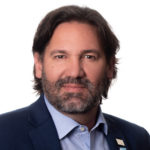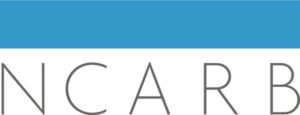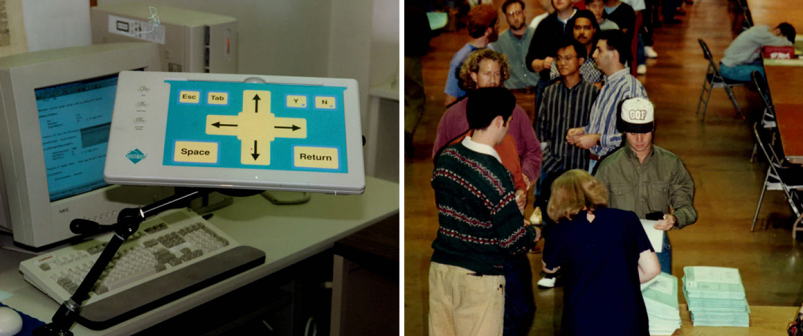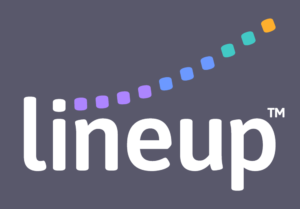Lining Up Ways to Help People Do and Be More: Guillermo Ortiz de Zarate, NCARB
Guillermo Ortiz de Zarate didn’t anticipate transforming the way an association services its members. He also didn’t anticipate creating a software platform that aims to create strong, diverse teams, or to be living in the United States as long as he has, but here he is — and his colleagues at the National Council of Architectural Registration Boards (NCARB) are grateful for his trust-based approach to management and technology.
As the Chief Innovation and Information Officer for NCARB, Ortiz de Zarate has relied upon agile and lean startup methodologies to project manage big changes to the processes NCARB uses to certify future architects. He has also helped build Lineup, a software platform that helps organizations efficiently manage talent and form teams with diverse strengths. We talked with him about improving processes using lean startup methodology and what his goals are for NCARB.
Association Adviser: What career path led you to the CIO position at NCARB?

Guillermo Ortiz de Zarate: Since high school I’ve been a tech professional. I was born and raised in Buenos Aires, Argentina, and after 15 years of working in the city, the company I was working for that was headquartered in Washington, DC offered me a promotion and relocation package. I moved to the United States in 1999 thinking I was coming for a couple years, but haven’t left.
AA: What made relocating to the U.S. attractive?
GO: Working in the U.S. would enhance my resume. I was pretty young to be leading a software development shop. For me to gain experience in the U.S. was going to be great for my career. I also had 9-month old twins when I relocated. That was a big change, but we were young and fearless to leave our support systems 5,000 miles behind. When I would return [to Argentina], I planned to pursue my leadership track.
But back home, the economic situation changed in Argentina around 2001. There was an economic crisis, devaluation of the Argentinian peso and an 18 percent unemployment rate. In contrast, I had an interesting job [in DC] and my company was sponsoring my green card. It didn’t make sense to go back.
I stayed with that company until 2005, then did some work with a small marketing agency startup that was in the business of providing custom website solutions to clients for a couple of years until an opportunity to work in IT for the National Council of Architectural Registration Boards came by. At this point, I’d been dealing with the U.S.’s immigration process for six and a half years, and felt like I shouldn’t be in this country just to help make companies money, but to give back to people. I saw parallels between immigration and customs, and NCARB: If you want to call yourself an architect, you must have a license in one or more of the 50 states and five U.S. territories, and NCARB facilitates that licensing. Back in 2007, people seeking architect licenses hated NCARB because dealing with the organization felt like an impediment to achieving their goal of practicing architecture.
I felt similarly frustrated by the impersonal aspect of being one case among millions to the office of immigration. There was no context of my family and the fact that their livelihood depended upon the outcome of my pending citizenship status.
So when I read online reviews of NCARB while applying for the IT job, my initial thought was, “If I can do anything to help this organization and these architects, I should do it.” I was offered the position of assistant director of information technology and accepted it.
AA: Have you achieved your goal of helping people through NCARB?
 GO: My drive was to modernize a paper-oriented bureaucracy into a more efficient business, and yes, I’ve been part of a group of individuals who, guided by good leadership, have achieved this goal. NCARB’s leadership has allowed an incredible transformation of our organization that deserves a whole chapter unto itself. NCARB is now considered a thought leader because we push the envelope on all our processes. We walk a fine line between providing regulatory processes that help protect the health, safety and welfare of the general public while providing excellent customer service to the people trying to become licensed. The latest generation of licensure candidates sees us as a partner on their quest to become licensed architects — a big change from 10 years ago.
GO: My drive was to modernize a paper-oriented bureaucracy into a more efficient business, and yes, I’ve been part of a group of individuals who, guided by good leadership, have achieved this goal. NCARB’s leadership has allowed an incredible transformation of our organization that deserves a whole chapter unto itself. NCARB is now considered a thought leader because we push the envelope on all our processes. We walk a fine line between providing regulatory processes that help protect the health, safety and welfare of the general public while providing excellent customer service to the people trying to become licensed. The latest generation of licensure candidates sees us as a partner on their quest to become licensed architects — a big change from 10 years ago.
At the time, the organization was too narrowly focused on too few tasks. NCARB was pretty siloed. Our colleagues were only looking at immediate needs for the programs they managed; there was little understanding of what the whole picture meant. If you did step back, you could see that all of our services are interconnected and we are all serving the same people. So, defining a North Star vision of where we wanted to be, then finding intermediate steps to achieve that vision was key. It was a gradual process.
We’ve also transformed the way we serve states and their offices to ensure they’re licensing competent professionals who won’t harm the public. On top of that, because of all the investments and money we’ve spent upgrading our tech, we can take on more work and more candidates.
We like to say we are a countercyclical organization compared to the rest of the economy: When work isn’t available elsewhere, people who were thinking of getting licensed do it because they need to differentiate themselves for more competitive positions. Since 2008 and the beginning of the most recent economic recession, NCARB has almost doubled its income from $16 million to $30 million. We were processing about 60,000 people in the entire industry in 2008; we now service about 120,000 individuals each year.
AA: What tech solutions did you use to increase capacity?
GO: A mixture of in-house developed software and best-of-class off-the-shelf software to achieve a holistic enterprise asset of information.
First, we attacked low-hanging fruit by re-engineering some business processes. We looked at how a process might help everyone, and not just a small group of people, so that every NCARB process contributed to the greater good. We earned some quick wins on the operations side by focusing on what we were doing inefficiently. The goal was to manage data input so that data is entered just once and managed in a way that keeps it clean. Our vision was to maintain and achieve a single source of truth and serve it at the right time in the right format.
One of first candidate-focused projects we created was an online experience verification system. Aspiring architects must log a certain number of approved employed hours to obtain their license, and NCARB staff would verify those hours by double-checking who employed them, what kind of experience they were gaining, and how many hours they recorded. It was a very cumbersome, paper-based process that took six to seven months to complete a single paper form. Our online verification system immediately created better efficiencies and increased capacities for everyone involved while reducing data errors by 95 percent!

Moreover, it created an opportunity to connect operations with other side of the house, our programs and standards, and continue NCARB’s transformation. We use practicing architects from all around the US to research and develop standards that the state licensing boards then choose to adopt. Our cycle looks five to six years into the future to determine what are the knowledge, skills, and abilities that define minimum competence in architecture to protect the health, safety, and welfare of the public. Bringing our processes up to 21st century speed help the licensure candidates navigate the path to licensure with a much better experience, and the staff and our volunteers work make sound regulatory decisions that are based on insights coming from our own data practices.
AA: Why the focus on data?
GO: We’re in the business of evaluating people’s competence. We can only do that if we have secure and reliable data about them. The moment you have unreliable, competing data, how sure can we be that this person will competently practice architecture?
AA: You’re a proponent of lean startup methodology, and have co-authored a paper [with Elizabeth Engel, CAE] about applying the data-driven lean startup principles to association innovation. What is it?
GO: Lean startup helps you test assumptions and risks as early as possible, and guides you toward making adjustments as early as possible so that your organization doesn’t invest a lot of time and resources into solving a problem that is not worth solving. There is no free lunch, everything is a tradeoff and when you choose to work on one initiative you are choosing not to work on another one. It is important to know you are working on the right thing.
For example: Your boss wants the organization to hold a workshop. You could spend six months planning it if you assume there’s an audience for it. But if you don’t validate that assumption until you open registration, you might have invested a lot of time and money into something that isn’t actually needed or wanted. Lean startup says, first validate the assumption that there’s an audience who would pay to come listen to a speaker at a workshop. If the demand is there, then use the agile methodology to make the event the most useful it can be.
Lean startup holds people accountable for their ideas before they execute them. You jump on discovery and make sure the problem is something that needs solving. I fell in love with lean startup because I looked back at NCARB’s processes and thought, knowing what I know now, I would have tried to influence our organization to approach our transformation differently, in a way that would ensure we were working on the right projects first.
AA: Did you use lean startup principles at during this efficiency transformation at NCARB?
GO: Not quite. I started at NCARB in 2007 but didn’t learn about lean startup methodology until 2013.
But before that, we operated using agile methodology, sparking a revolution in the organization around culture. In my department we started hiring more intrinsically motivated people that love tech and helping the people here, and weren’t motivated so much for the paycheck as for the goal of delivering value. And with that new culture, we adopted scrum (one of the versions of the agile methodology) to deliver value in software development, data management, infrastructure, and even help desk processes.
Agile methodology flips the famous iron triangle of project management (scope, time, and money), teaching that instead of telling people what they should do, how, and by when, you tell them what is needed and why, agreeing on a delivery date and a fixed amount of money and resources. The team can then decide what can get done with those constraints and continuously checks in small iterations if the progress is going in the right direction. People then feel part of the solution and more committed to get it done. They’re empowered to do what they think they can do. They’re not being told how or when to do it. They’re treated as contributing adults!
That little culture development started slowly creating buzz around NCARB. We were a high-performing team still enjoying our weekends. Some other teams were overworked and not delivering as much. So our team created an initiative to bring this method to the rest of the organization.
Agile movement is a culture and practice change. Instead of trying to guess how long something will take and how much it will cost, you focus on what’s most important within your time and resource constraints. It’s called agile because you work in small time frames (as little as two weeks). It allows a lot of scope change in high-uncertainty environments. There was a lot our IT team didn’t know about how things operate in the rest of the organization. But we’d gather at checkpoints often to ensure were were remaining on a sustainable track. In 2013, I started sprinkling the lean startup method into our agile movement to find if the problems we were solving were the right ones as early as possible.
AA: How can technology assist an association wanting to grow?
GO: Many of the reasons we’ve been successful is because leadership understood from the start that tech cannot be not an afterthought. It’s not something that complicatedly takes away money and resources without a return on that investment. NCARB is in the business of managing information, and tech is an integral part of that business. We have partners, internal and external, trying to do the same thing. NCARB’s environment and the long leash I’ve been given allows me to lead. Many CEOs wonder when the tech spending will end, but we know it’s part of the business.
AA: You’ve created a volunteer management software system. Tell us about it! How will it benefit associations?
 GO: Lineup is the result of maturity in our organization. Once we dealt with our immediate process improvements, I had time to ask the people running our ancillary processes what their biggest problems were and how we could help solve them. We spoke with volunteer committees about the standards they create (our national exam for instance, the ARE®), with the architects affected by those standards, and with the president of the board. The more I talked to the volunteers, the more I discovered that the impact of their decisions was huge! They were making recommendations about our standards that affected generations of architects.
GO: Lineup is the result of maturity in our organization. Once we dealt with our immediate process improvements, I had time to ask the people running our ancillary processes what their biggest problems were and how we could help solve them. We spoke with volunteer committees about the standards they create (our national exam for instance, the ARE®), with the architects affected by those standards, and with the president of the board. The more I talked to the volunteers, the more I discovered that the impact of their decisions was huge! They were making recommendations about our standards that affected generations of architects.
After we had all those conversations, we realized our inefficiencies weren’t a process problem. It was a strategy problem. The people on these committees matter, not just politically but intellectually. However, we had limited amount of spots on committees and more than enough talent to fill those. How could we help our committees make better teams? We built Lineup to enable better understanding of the talent available, the needs of teams, and how to strategically match talent to teams. Keeping in mind that there are multiple teams that need the same talent, how do we get 20 good teams, and not one excellent team and 19 crappy teams? It has been transformational for NCARB.
AA: How can associations use this?
GO: Lineup is versatile enough that anyone can use it for any type of team, volunteer or staff management. We now use Lineup to give people on our staff chances to grow in their professional knowledge and to ensure that our teams are diverse in strengths.
AA: What are your goals for Lineup software over the next couple of years?
GO: We have recently spun it off as a for-profit company. I hope to make it THE tool for making better teams by partnering with other software applications that would complement Lineup and make life easier for people. The goal is always to help people.
AA: What are your goals for NCARB over the coming year?
GO: We’ve done a good job at transforming the organization, managing our data and helping people. We’re starting to expand our circle of influence. Some of the software we’ve built in house we’re offering to state jurisdictions to help them manage their stakeholders.
The challenge I see in the next couple of years is retention of the great talent we have. We’re a small association in a highly competitive geographic area. Now that Amazon is coming to Northern Virginia, finding creative ways of attracting and retaining talent will be tough. Currently, my retention is great — not because my colleagues are stuck (they’re brilliant), but because we work to create an environment that is a two-way street of value creation and career development. I put a lot of effort into helping people grow in their professional knowledge and career. They’ve grown more than NCARB itself. The promise of growing here has come true for them.
AA: In terms of your job, what keeps you up at night?
GO: I have lot on my plate and I might be overworked but I’m not stressed. I enjoy what I do; coming to work, and the product and value we give people. I’m a happy guy. I’m not really stressed.
AA: One more question: Did it work out with U.S. Citizenship and Immigration Services?
GO: Yes, I became a U.S. citizen five years ago! A happy ending.

